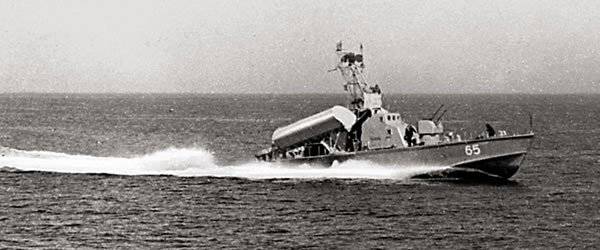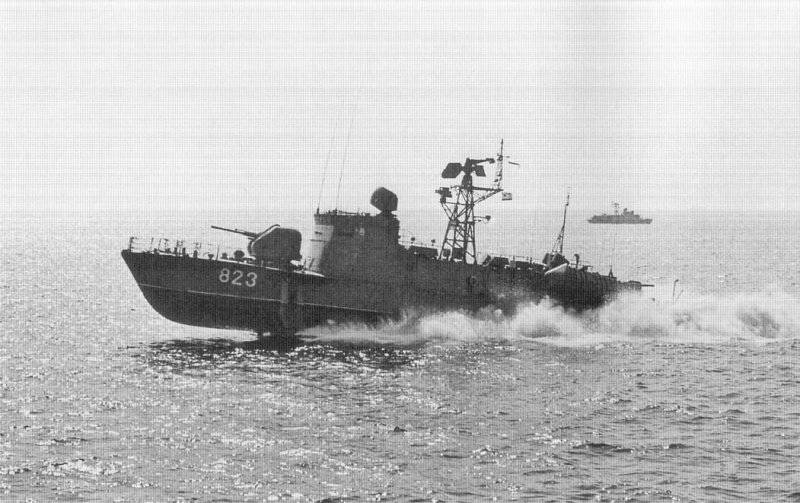Pavel Goinkis - creator of torpedo boats
A special contribution to the process of academic preparation of shipbuilders was made by the Nikolaev Maritime Academy, which lasted from 1877 to 1917. Three specialized departments were formed on its base: mechanical, shipbuilding and hydraulic. The largest contribution to the development of Russian construction fleet introduced one of the first graduates of the Nikolaev Maritime Academy Alexei Nikolaevich Krylov, who after graduation became a teacher, and then headed the Academy's shipbuilding department. It was Krylov who proposed introducing new requirements for the training of shipbuilding engineers. Now, design engineers had to be able to solve complex technical issues related to the design of the new generation of the Russian fleet, to be able to identify the types and main elements of the ships to be built, to engage in the development of their projects. Therefore, it was decided to recruit personnel of shipbuilding engineers from specialist graduates of the Naval Engineering Schools, preferably with practical experience. The courses of mathematics and theory of the ship were conducted by Academician Krylov himself, and the ship engineer Pavel Gustavovich Hoinkis helped him in this.
В history Russian shipbuilding bright page entered many famous Russian shipbuilding engineers. But I especially want to tell you about Goinkis, who is known to the whole world as the creator of the first high-speed torpedo boat in the Soviet fleet. In addition, he is also the ancestor of a series of light gas turbine ships.

Pavel Goinkis - German Russian origin. He was born on November 1 1889 of the year in the family of German merchants. He first studied in Warsaw in a real school, in 1911 he graduated from the Kronstadt Marine Engineering School. The first time he worked as a junior assistant shipbuilder in the emergency docks of the Kronstadt port. A year later, he continued his career as an engineer at the Russud plant in Nikolaev, here he helps in the construction of battleships. In 1913, he decides to enter the Nikolaev Maritime Academy. However, he has to interrupt his studies there in the 1914 year due to the outbreak of the First World War. First Goynkisa sent to Sveaborg, and then in Arkhangelsk, where he is engaged in arming civilian ships with artillery. It is known that in 1916, he was able to carry out a unique ship repair operation on the Canada ice-cutter using a special caisson.
In the same year, Goinkis continued his studies at the Academy, which he graduated from in 1918. After completing his studies, he remains to teach the theory of the ship in the shipbuilding department. At the same time, the engineer directs the shipbuilding department at the Baltic Shipyard. Since 1920, Pavel Goinkis has been the chief engineer of this plant and since then his contribution to the development of domestic shipbuilding is very difficult to overestimate. With his assistance, the construction of barges, lighters is being revived, the repair of ships is being carried out. Since 1925, under the guidance of an engineer, the first Soviet logging vessels and passenger ships have been launched.
Later he takes an active part in building a shipyard in Tyumen, is considered the founder of the Tyumen shipbuilding plant. During the period from 1920 to 1930, he runs shipyards in Vladivostok, Kosmolsk-on-Amur, heads the main department of the Maritime shipbuilding industry, and is engaged in the development of a technical assembly of warships in the Far East. Pavel Gustavovich Goynkis was twice awarded the Order of the Red Banner of Labor, is the winner of the Stalin Prize. In 1937, he received a Ph.D.
In 1938, Goinkis was arrested on false charges and convicted. In conclusion, the engineer stayed until 1948, but he did not leave his favorite business there and continued to work - he worked as chief designer at the NKVD Design Bureau. It was during these years that he was able to develop several projects of warships. After his release, he worked on a new project, developed and set up a serial production of rocket boats. Goinkis was rehabilitated only in 1956 year.
After the end of World War II in 1950, Soviet design engineers were given the task of developing new types of torpedo boats. This was mainly done by the Special Design Bureau for the design of long-distance boats. This bureau was organized in 1949 by special order of the USSR People's Commissariat of the shipbuilding industry. Thus, a team of Soviet design engineers under the leadership of Pavel Goinkis created the first large torpedo boat of the 183 project in the Soviet fleet. It was a high-speed vessel operating with a gas turbine power plant. This boat has become the main type of torpedo boats of the USSR for many years. Production of these boats was carried out from 1949 to 1965 years. There were similar boats in a variety of modifications. On its basis, the world's first missile boat project 183-P was released. The total number of boats built on the basis of the 183 project was more than four hundred pieces, many of which were specially made for export to other countries: Algeria, China, Cuba, Libya, Indonesia and a number of other countries. The basis for the creation of these torpedo boats were laid the most successful design solutions for the construction of boats "Vosper", "Higgins" American engineers.
Famous designer Pavel Goinkis died in Leningrad on March 21 in 1959 year.

Information